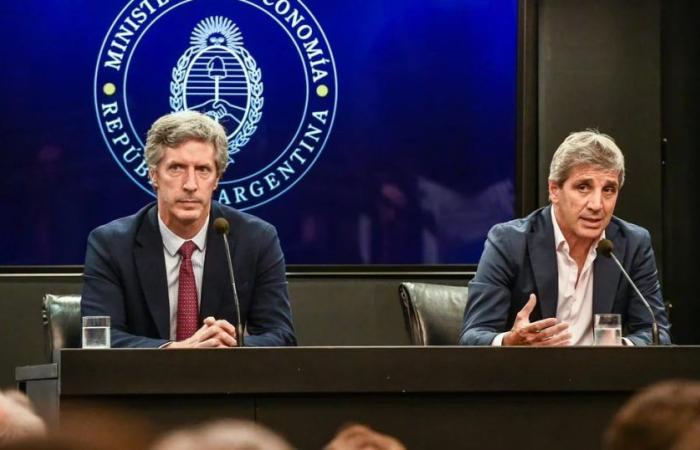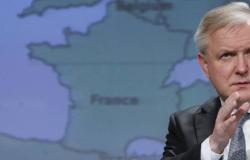
One of the results of the last negotiation between the Government and the International Monetary Fund was that the economic team will have to ensure a positive interest rate against inflation after a first stage of marked liquefaction of the pesos. The market is already beginning to consider what should happen so that a policy of interest rates higher than price increases is sustained and concrete for the financial system.
The IMF decided not to give in in the last quarterly review of goals when analyzing what the next steps of economic policy should be and adjusted to its traditional manual, which indicates that the interest rate must be positive. It is about encouraging savings in local currency and preventing savers from choosing to dollarize. In other words, encourage what economists call the “demand for money.”
“The real policy rate should become positive to support the demand for pesos and disinflation,” the IMF deputy director expressly said. Gita Gopinath.
As a kind of pre-announcement, hours before, Luis Caputo had anticipated after the last Treasury Bills tender (a 4.25% monthly interest rateslightly higher than May inflation), that the “negative interest rate stage ended.”
The market interpretation was that this factor was one of those required in the framework of the negotiation as a prior action (prior action), which are usually common before the declaration of support and disbursements is crystallized, such as the one the organization made on Thursday evening.
The Government will have to recalibrate its rates and the way it pours into the financial market, according to market reports that were released in recent days, and the economic team announced through a statement following that of the IMF that it would undertakes to send the organization’s staff a monetary roadmapas published on Thursday Infobae.
“The BCRA will continue to conduct monetary policy in a flexible, prudent and pragmatic manner. Based on the progress achieved in the recovery of monetary policy tools and the control of money creation factors, the Agreement has provided for the presentation to the IMF of a monetary programming framework at the end of June 2024″said the monetary authority in that joint message. The interest rate from now on and how it is transmitted to the rest of the savers will be one of the issues in question.
“While that statement (by Caputo) needs to be brought to reality (because June inflation will probably be higher than 4.25% and, more importantly, because 4.25% is not a rate that can be accessed freely given the emission limits set by the Treasury), at least there seems to be an intention to go in that direction,” considered a report from 1816. “If the Mecon really wants to ‘do monetary policy’ (by indirectly determining the remuneration rate of deposits), you will have to expand (or completely eliminate) emission capsamong other things,” they mentioned.
For the consulting firm Vectorial “what we are observing seems to be the passage to a more traditional scheme of monetary policy, with positive real rates that allow, with the level of monetary liabilities already substantially reduced, to continue absorbing pesos in a sustainable manner. The change is also more consistent with the recipe required by the IMF and should also be read in that sense, in a context where the government seeks to begin renegotiating a new program with the organization that includes fresh financing. Added to this is the approval of the Base Law and the Fiscal Package, which the IMF demanded as a guarantee of the political viability of the economic plan and as a way to give greater quality to the fiscal result. In summary, it is possible to interpret these movements as preliminary actions to settle an agreement that could be closer than expected“, they risked from that consulting firm, which was founded by the former president of Banco Nación Eduardo Hecker.
LCG, meanwhile, raised “doubts” about the rate above inflation because “relative prices that have been postponed, such as rates and the exchange rate, still need to be updated.” “In addition, the reference power of the Lecap rate is still uncertain. First of all, There are still passive repos as a destination for the banks’ excess liquidity, which in turn is a reference for fixed terms. On the other hand, the funds that were left out of the placement necessarily had to be directed to other instruments, such as Common Investment Funds (FCI), which offer lower rates or repos (with a TEM of 3.3 percent). All this necessarily has an impact on whether the interest rate is negative or not and on the magnitude,” they concluded from that consulting firm.
Relative prices such as rates and the exchange rate still need to be updated, the reference power of the Lecap rate is uncertain and there are still passive repos as a destination for banks’ excess liquidity (LCG).
For Portfolio Personal Inversiones, Caputo’s announcement “represents one more sign towards normalization would change which should be the north of the Government since the Bases Law has been approved.” “Beyond this mention, the market maintained its monthly average inflation expectation for the June/August period at 4.9% (…) the market does not discount a substantial reduction in inflation between now and December,” they said. .
Finally, in a report to clients in recent days, PxQ (led by Emmanuel Alvarez Agis) anticipated in a report that the Government would migrate from a “fiscal dominance” scheme to one of “monetary dominance.” One of the systems in which it could be crystallized would be one “in which the BCRA buys/sells currencies and does not issue to finance the Treasury directly. The reference interest rate for liquidity management would be that of Treasury bills and the BCRA would have a liquidity window overnight to manage excesses/short-term liquidity. In that scheme, the BCRA would intervene in the Treasury curve to coordinate the interest rate,” he said.





